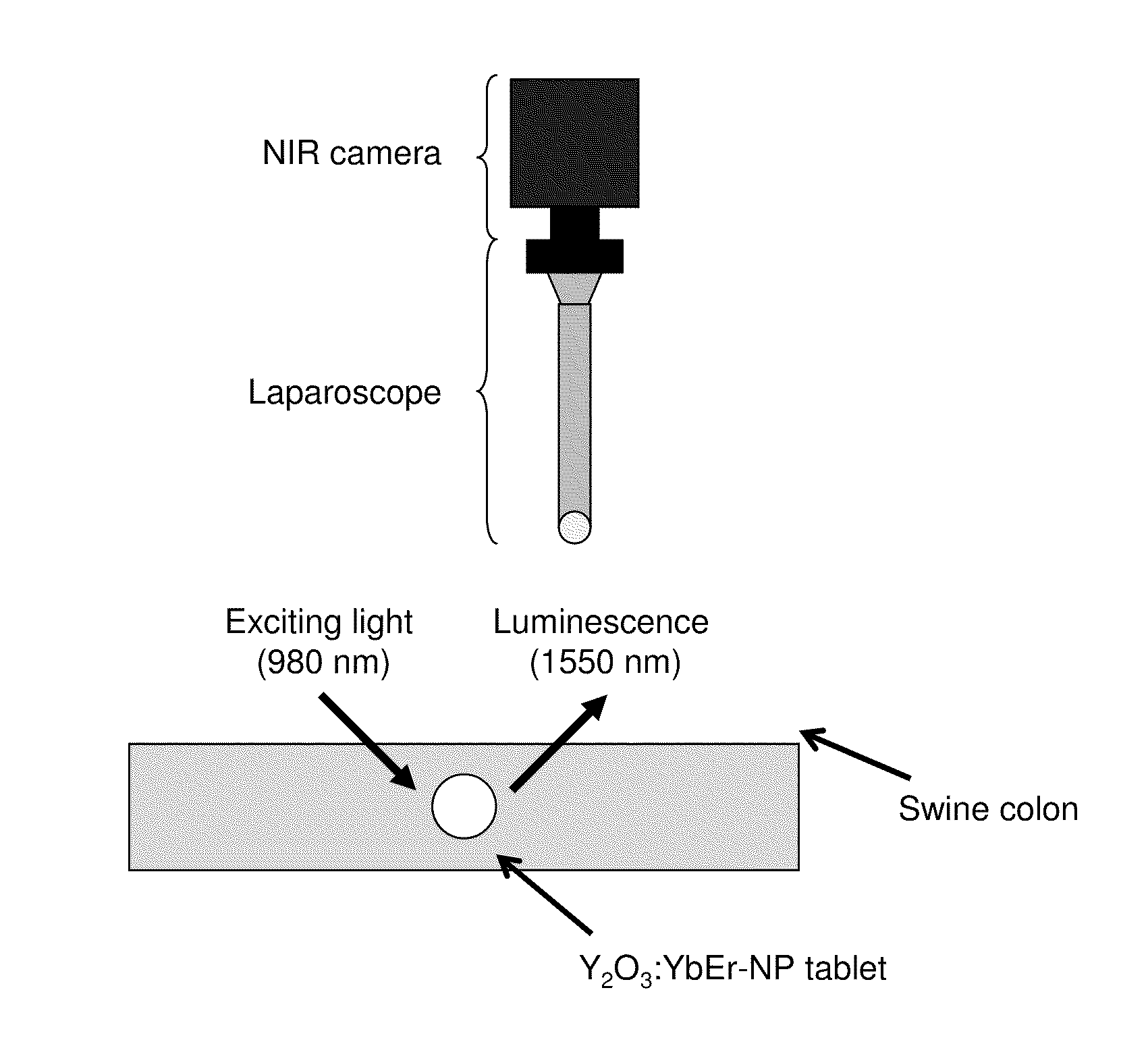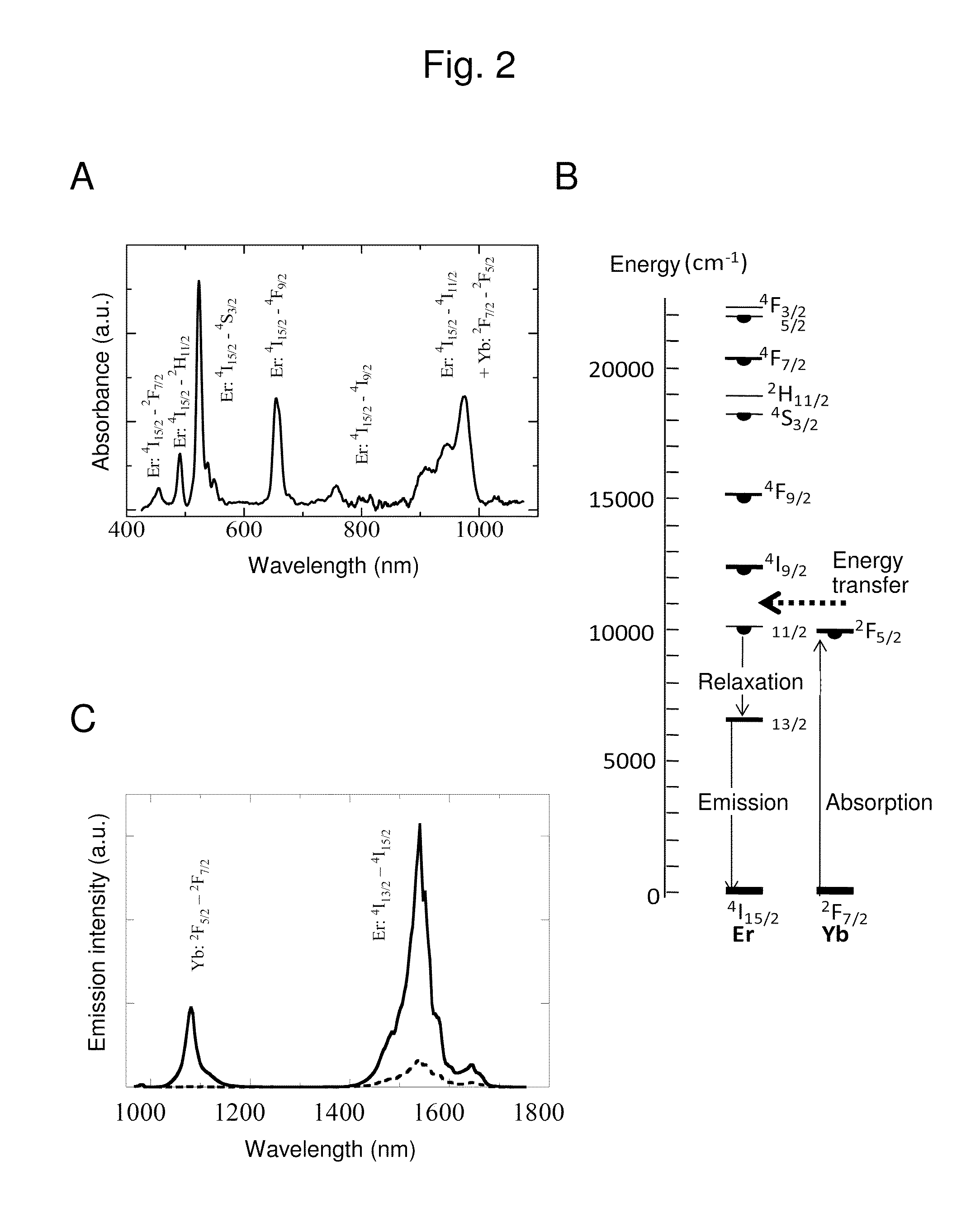Bioimaging method using near-infrared (NIR) fluorescent material
a fluorescent material and near-infrared technology, applied in the field of bioimaging markers, can solve the problems of difficult to identify the site marked by tattoo injection from outside the colon/rectum, shallow observation depth, and difficult to detect visible light generated
- Summary
- Abstract
- Description
- Claims
- Application Information
AI Technical Summary
Benefits of technology
Problems solved by technology
Method used
Image
Examples
examples
Preparation of NIR Biophotonic Nanoparticle
[0086]A fluorescent material was prepared by a known technique used for preparation of an upconversion nanoparticle; that is to say, the homogenous precipitation method (Venkatachalam, N. et. al., Journal of the American Ceramic Society 92, 1006-1010, (2009)). Specifically, 20 mmol / L Y (NO3)3, 0.2 mmol / L Yb (NO3)3, and 0.2 mmol / L Er (NO3)3 were dissolved in purified water (200 mL), mixed with a 4 mol / L urea solution (100 mL), and stirred at 100° C. for 1 hour. The obtained precipitate was separated by centrifugation and dried at 80° C. for 12 hours. The thus obtained precursor was calcinated at 1200° C. for 60 minutes in an electric furnace. Accordingly, anhydrous crystalline Y2O3 nanoparticle codoped with anhydrous crystalline Yb and Er (hereafter referred to as “Y2O3:YbEr-NP”) was obtained.
[0087]The obtained Y2O3:YbEr-NP was identified using a field emission scanning electron microscope (FE-SEM) and X-ray diffraction (XRD). FIGS. 1 (A) an...
PUM
| Property | Measurement | Unit |
|---|---|---|
| wavelength range | aaaaa | aaaaa |
| particle size | aaaaa | aaaaa |
| particle size | aaaaa | aaaaa |
Abstract
Description
Claims
Application Information
 Login to View More
Login to View More - R&D
- Intellectual Property
- Life Sciences
- Materials
- Tech Scout
- Unparalleled Data Quality
- Higher Quality Content
- 60% Fewer Hallucinations
Browse by: Latest US Patents, China's latest patents, Technical Efficacy Thesaurus, Application Domain, Technology Topic, Popular Technical Reports.
© 2025 PatSnap. All rights reserved.Legal|Privacy policy|Modern Slavery Act Transparency Statement|Sitemap|About US| Contact US: help@patsnap.com



